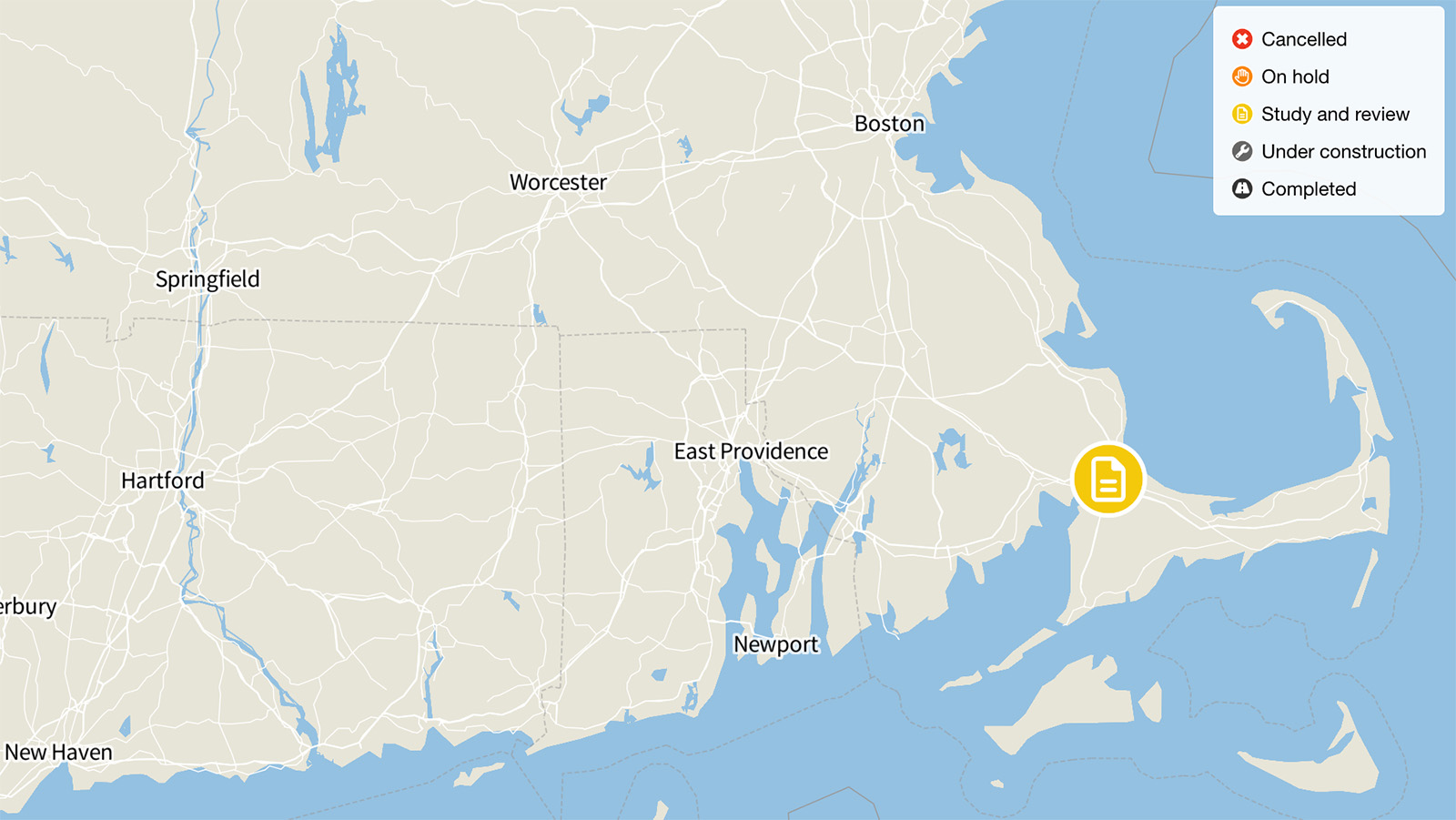
Interstate 405 Improvement, Orange County CA
The Interstate 405 Expansion is a $1.9 billion project that plans to add express toll lanes to 16 miles of “the 405,” one of the most congested highways in the United States. The project is based on estimates of dramatic traffic increases that are both unrealistic, and that far exceed real use trends. Expanding the highway, however, could very well bring many of those who currently avoid the 405 due to congestion back to the highway – generating new traffic that causes congestion to return.
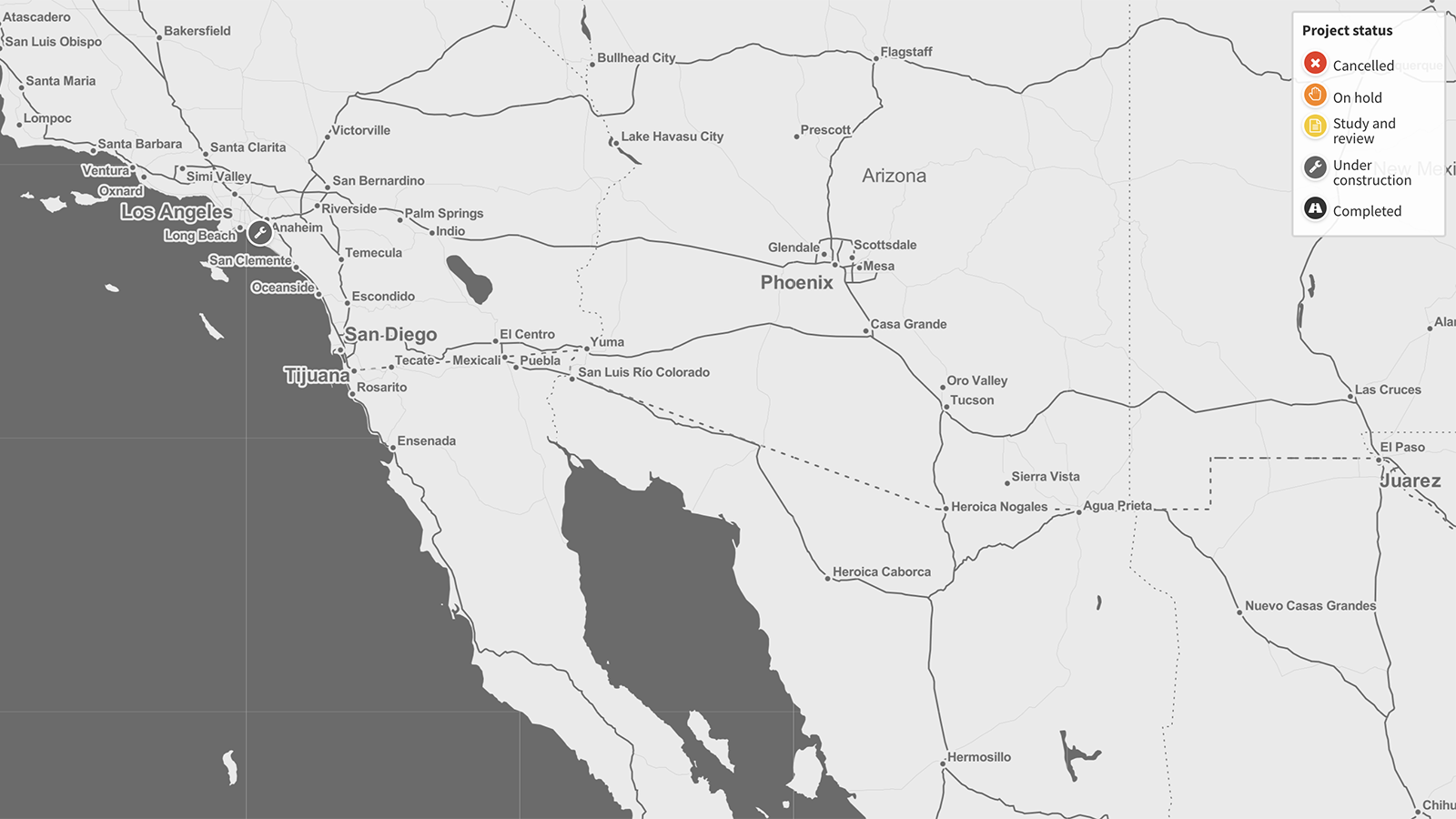
Status: Under construction
Originally reported cost: $1.9 billion
Update for current status:
As of September 2023, the Interstate 405 Improvement project was under construction.
Update from Highway Boondoggles 4, 2018:
The Interstate 405 Expansion is a $1.9 billion project that plans to add express toll lanes to 16 miles of “the 405,” one of the most congested highways in the United States. The project is based on estimates of dramatic traffic increases that are both unrealistic, and that far exceed real use trends. Expanding the highway, however, could very well bring many of those who currently avoid the 405 due to congestion back to the highway – generating new traffic that causes congestion to return.
Construction on the project began in spring 2018.
Original story from Highway Boondoggles 3, 2017
Interstate 405 in southern California is the busiest Interstate highway in the nation, carrying more than 370,000 vehicles a day as it crosses from Los Angeles County into Orange County. The American Highway Users Alliance – a pro-highway group – labeled the stretch of “the 405” between Interstate 605 and California state highway 22 the second-most congested highway in the United States in 2015.
For as difficult as congestion is on the 405, local officials forecast a horrific future in which drivers spend hours each day stalled out on the highway. A 2011 traffic study forecast that, by 2040, traffic along the 16-mile stretch of I-405 between Interstate 605 and State Route 73 in Orange County would slow to just 5 to 8 miles per hour during rush hour – slower than a bike ride. A morning northbound rush hour trip that took 18 minutes in 2009 is forecast to take an hour and 54 minutes by 2040, while a morning southbound trip that took 37 minutes is forecast to take 2 hours and 43 minutes. A traveler going north on that stretch in the morning and south in the evening would spend 3 hours and 41 minutes on I-405 every day if those projections were to bear out.
The idea that hundreds of thousands of people would voluntarily spend that much time on their daily commute without seeking out other options defies common sense. Nonetheless, in an effort to forestall this dystopia, the Orange County Transportation Authority (OCTA) has proposed a $1.9 billion expansion of I-405 – tacking on an additional lane for three-quarters of the segment’s length, and creating two tolled “express lanes” in both directions by adding a new lane and converting an existing carpool lane.
Would it work? A cautionary tale can be found just a few miles up the road, where, in 2014, Los Angeles County completed the rehabilitation and expansion of I-405 through Sepulveda Pass – a project that wound up costing more than $1.6 billion, 55 percent more than its budget.
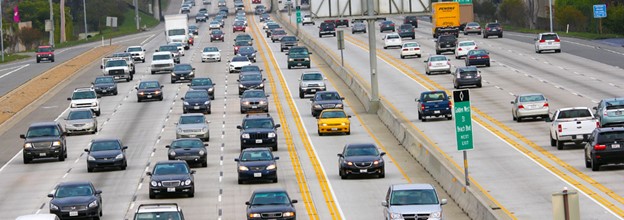
Interstate 405 south of Los Angeles is the busiest Interstate highway in the country. A plan to expand the highway in Orange County could draw even more traffic to the road. Credit: Orange County Transportation Authority
The project, which added a carpool lane to the northbound side of the highway and caused five years of construction delays, has not made rush hour traffic appreciably better, though it has reduced the length of the period each day during which drivers suffer from delays. A 2015 study sponsored by LA Metro, the agency that implemented the project, estimated that the project had produced less than half the total reduction in vehicle delay anticipated by its 2008 environmental impact statement.
Planners of the Sepulveda Pass widening did not account for the phenomenon of induced demand – when drivers shift their behavior to take advantage of new capacity. Indeed, the project’s 2008 environmental impact statement found that it “would not generate traffic but rather facilitate the redistribution of existing and future traffic.”
Orange County planners are not making the same mistake. Widening I-405, they assume, will increase vehicle travel in the corridor by 4.5 percent, or 80 million miles per year, by 2040 versus a scenario in which the highway is not expanded. They also, however, assume that traffic on I-405 will increase even without widening, with 34 to 37 percent more cars using the road by 2040 (compared with 2009 traffic levels). It is this assumed increase in driving that contributes to the horrific projections of future gridlock used to justify the expense of the project.
In reality, however, traffic on I-405 hasn’t been growing that quickly. Between 2009 and 2015, traffic counts from the California Department of Transportation (Caltrans) suggest increases of only 1 percent during that time period at two locations at either end of the corridor. The stagnation in traffic growth on the highway suggests that regional growth may not be taking place in the ways planners initially expected, or that congestion in the corridor may be encouraging people to make alternate travel, living and work decisions that reduce the amount of time they spend on the 405. Expanding the highway could very well bring many of those who currently avoid the 405 back to the highway – generating new traffic that causes congestion to return.
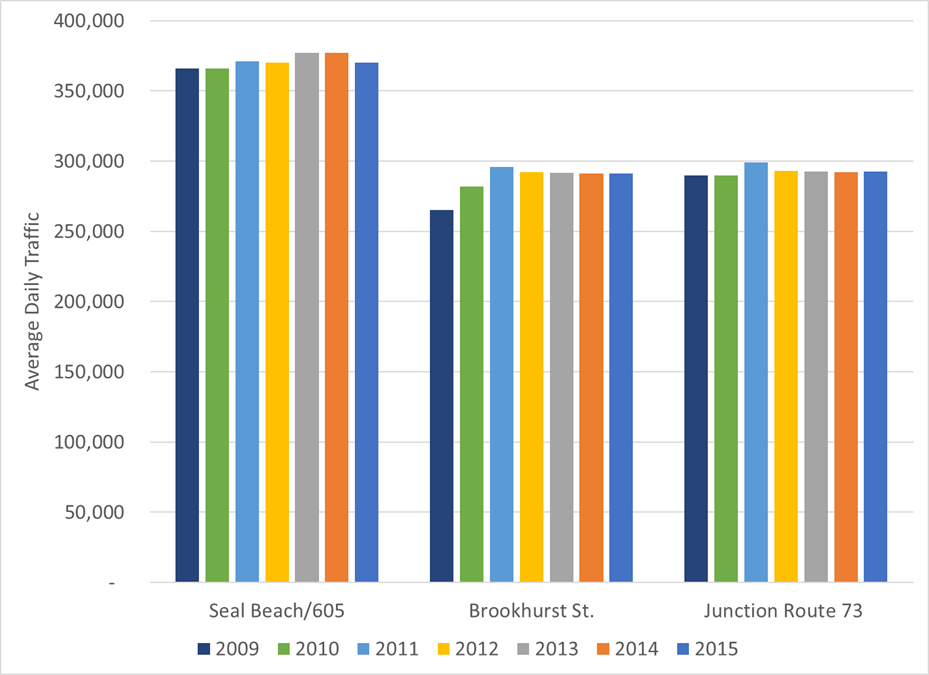
Annual average daily traffic for Interstate 405 in Orange County.
Communities along the 405 are worried that bringing more cars to the road will affect their quality of life. The cities of Seal Beach and Long Beach on the northern end of the project area have filed suit against the project, arguing that the expansion will cause traffic headaches at the Los Angeles/Orange County line where the new lanes are planned to disappear. One possible action to address their concerns – widening the 405 on the other side of the border within Los Angeles County – would further increase the cost of the project and increase the potential for even more drivers to hit the road, creating bottlenecks at other points of the system.
Those additional cars will also make it harder for California to meet its goals for cutting greenhouse gas emissions. California has been a national leader in reevaluating transportation and land use planning in light of its strong commitment to addressing climate change. Widening the 405 runs counter to that emerging priority.
Find out more
Topics
Find Out More

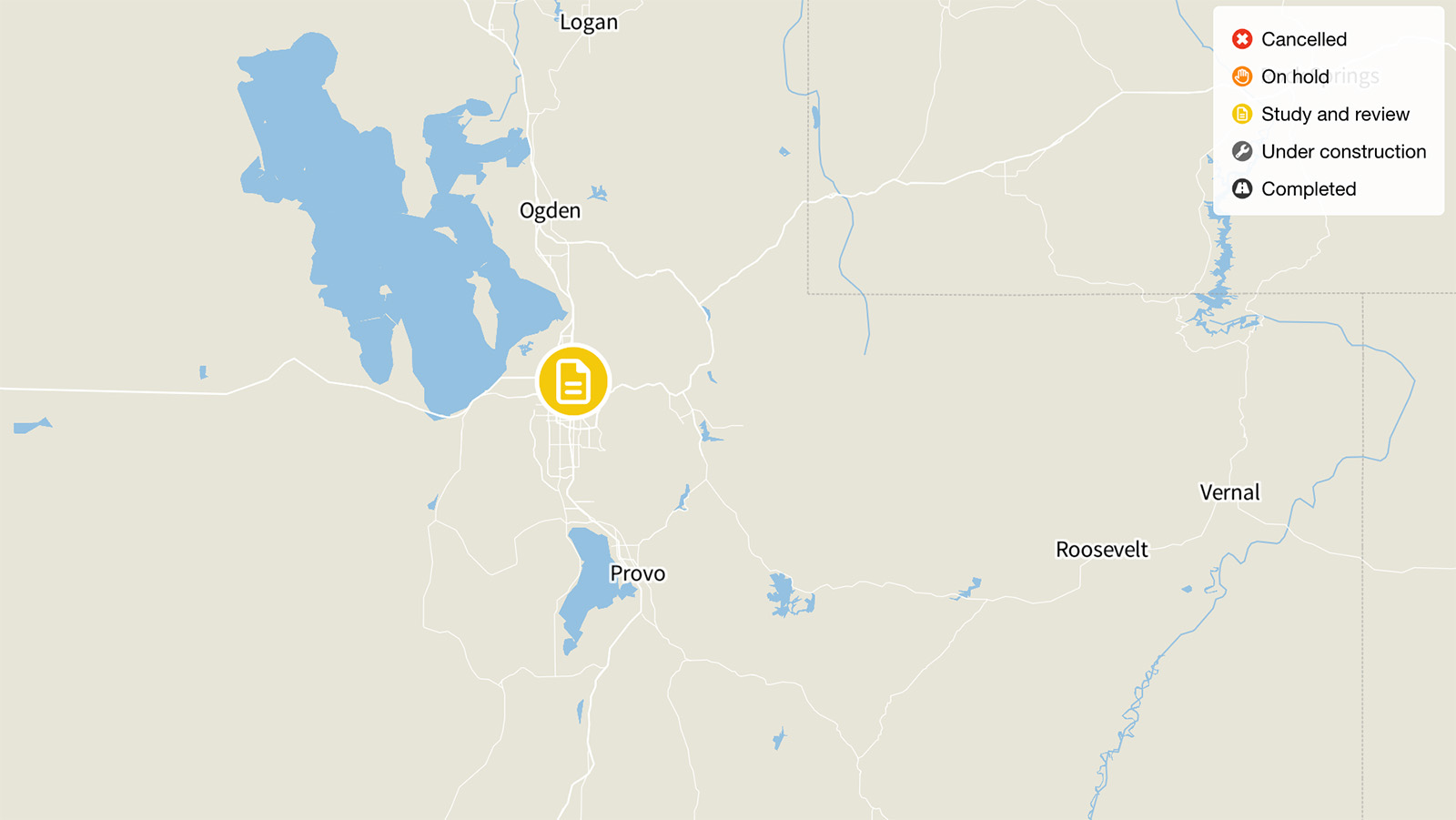
I-15 Expansion, Salt Lake City
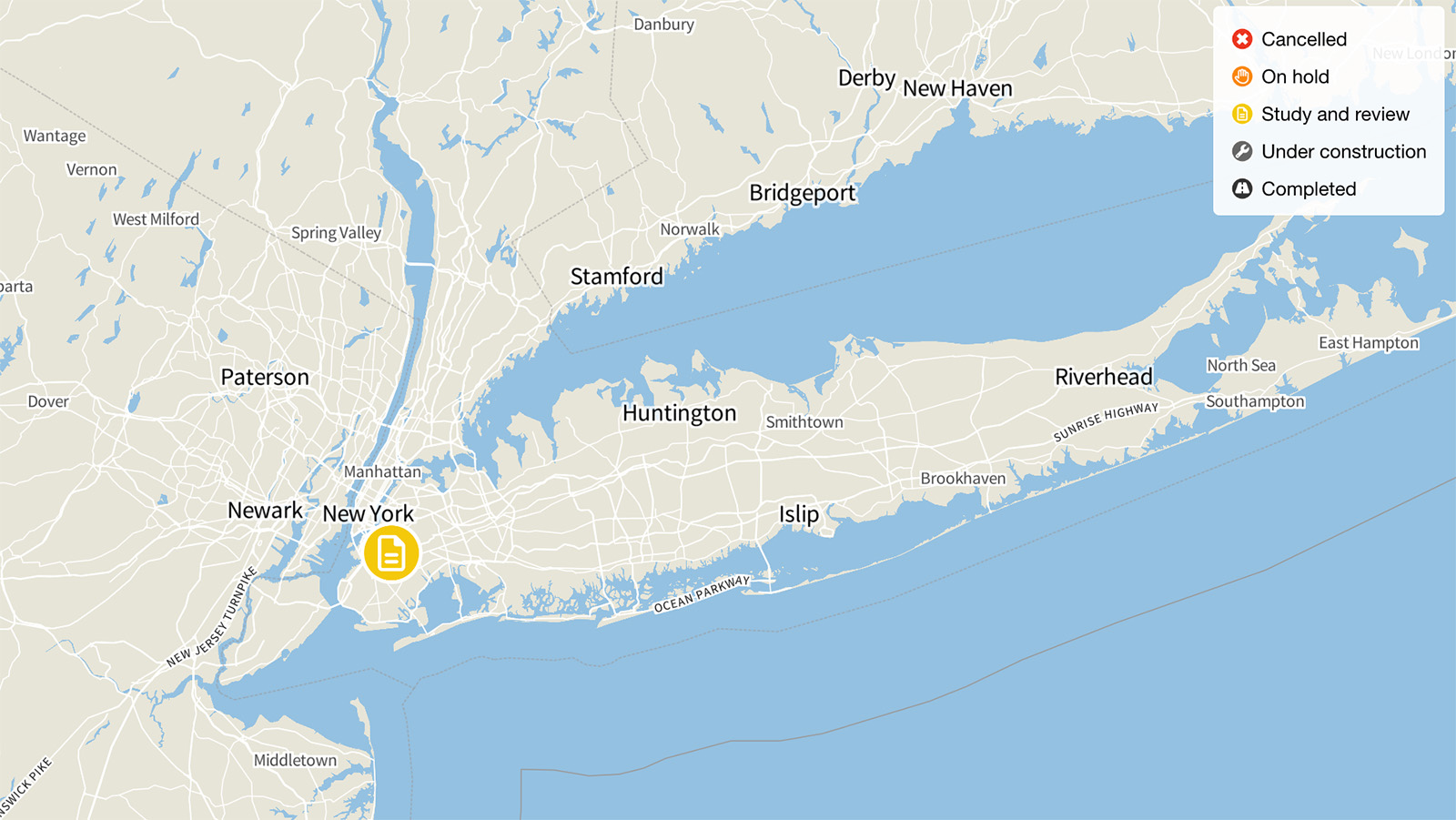
The Brooklyn-Queens Expressway, New York
